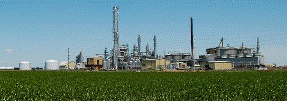Agricultural and Biological Systems Engineering, Department of

Adam Liska Papers
Document Type
Article
Date of this Version
8-15-2017
Citation
ASA Crop Residues for Advanced Biofuels Workshop: Exploring Soil Carbon Effects. August 15, 2017, Sacramento, CA
Abstract
The transformation of crop residue to soil organic carbon and CO2 is a conserved process that occurs globally. Due to the mathematics of carbon intensity calculations found in government regulations, the amount of CO2 emitted from crop residue per unit of energy in biofuel is largely independent of the amount of residue removed and the location of its removal, as shown by results from the US and India.
Soil organic carbon (SOC) levels are at equilibria determined by carbon inputs from plant material (+Ic) and loss from oxidation to CO2
Are the US results relevant for India if crop residues are used for biofuels on a large scale? India’s lower SOC levels vs US (69 vs. 170 Mg ha-1100cm-1), and lower maize yields (~12 Mg ha-1yr-1 in Andhra Pradesh vs. ~20Mg ha-1yr-1 maize aboveground biomass) means ~50 to 80% as much CO2 per unit biofuel energy from residue result compared to the estimate for the US.
Included in
Bioresource and Agricultural Engineering Commons, Environmental Engineering Commons, Environmental Indicators and Impact Assessment Commons, Oil, Gas, and Energy Commons, Other Earth Sciences Commons


Comments
Copyright (c) 2017 Adam Liska